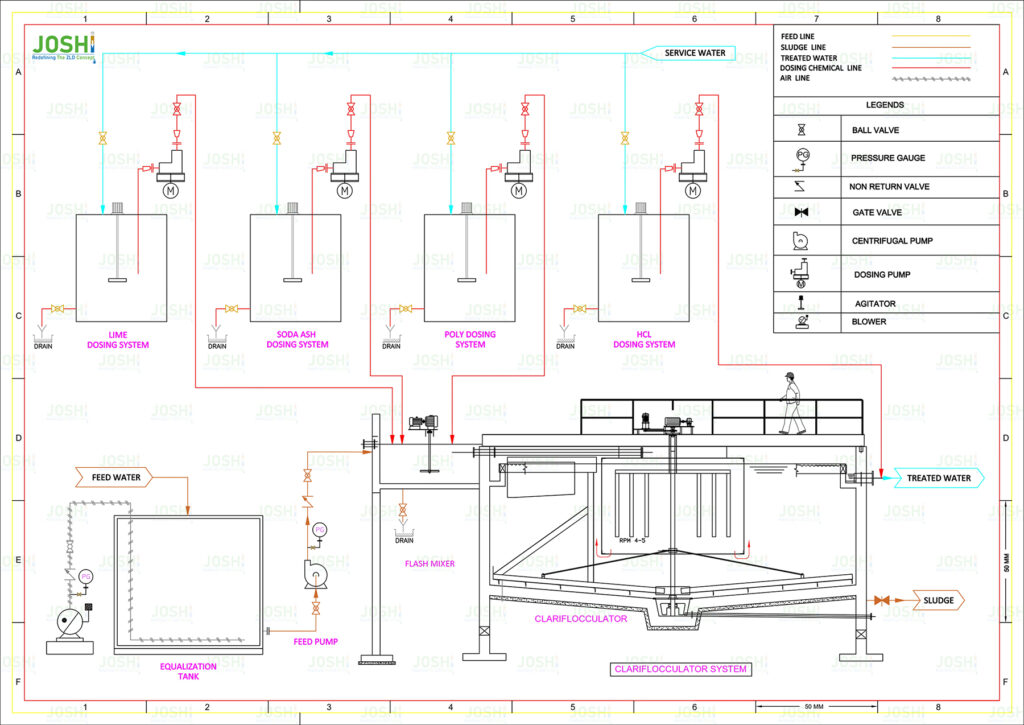Clarifocculator
A clariflocculator, also known as a clariflocculation tank, is a combination of a clarifier and a flocculator use in water treatment. It is a specialize unit that combines the processes of flocculation and sedimentation in a single tank to remove suspende solids and particles from water effectively.
Process Description
The flocculation process in a clariflocculator allows the suspend particles to collide, adhere to each other, and form larger and heavier flocs. The flocculation is usually achieve by the use of mechanical agitators, rotating paddles, or a combination of both, which provide the necessary mixing and contact between the particles and flocculants.
After the flocculation stage, the water proceeds to the settling stage within the same tank. The velocity of the water flow is reduced, allowing the form of flocs to settle to the bottom of the tank by gravity.
The clarify water, known as the supernatant, is collected from the upper part of the tank, typically using a collection mechanism or launder system. It is then further treate through processes such as filtration, disinfection, or other advance treatment methods to achieve the desire water quality.
Design Configuration:
The clariflocculator consists of a large tank with a central inlet for the water to be treate. The water enters the tank and is subjected to a gentle mixing or stirring action, similar to flocculation. During this flocculation stage, coagulants and flocculants may be add to aid in the aggregation of suspend particles into larger flocs.
Significance & Advantages
Space Efficiency: By integrating the flocculation and sedimentation processes into a single tank, the clariflocculator requires less space compare to separate flocculation and sedimentation units.
Improved Settling: The flocs formed during flocculation are larger and heavier than individual particles, which enhances the settling process and improves the efficiency of suspend solids removal.
Simplicity and Cost-effectiveness: Having a single tank for both flocculation and sedimentation simplifies the treatment process and reduces the equipment and infrastructure required, resulting in cost savings.
Flexibility: The mixing intensity and settling characteristics can be adjust base on the specific treatment requirements by controlling the speed and configuration of the mechanical agitators or paddles.
Targeted Impurities
- TSS
- Turbidity
- BOD
- Colloidal Particles
- Partial Color
- grit
- Chemical Sludge
- Hardness
- Heavy Metals






